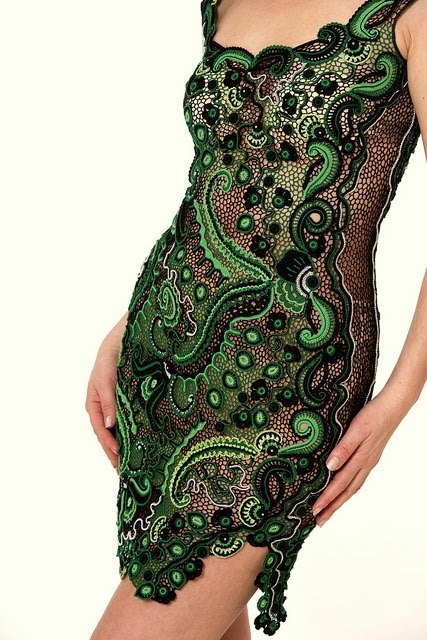Irish Lace - Beauty & Simplicity
Irish lace is world famous for the intricate designs that develop from very simple patterns. While lace making today is a big business, with large factories rolling off yards of fabric in minutes, the earliest Irish lace was a basic cottage industry.
In the 1800s Ireland was a divided land. The wealthy lords owned the land and tenant farmers produced crops for the owners. Many families in Ireland lived in small cottages on land called crofts. The family usually grew their own food on land not used for producing crops for the Lord of the Manor. Most of the crofters were "dirt poor" with little money for necessities.
With the lack of land and the rocky soil the most productive crop to grow was potatoes. Some of the cottage farmers did grow grains or vegetables, but even the seeds to produce these crops were too expensive for most of the tenant farmers. When the potato blight swept across the country between 1845 and 1851 and destroyed the crop it meant starvation for thousands of households.
Many of the Ursuline nuns were familiar with Venetian lace, brought over from France. Women had been producing rough cloth for their families for generations. The nuns realized the opportunity that these skills presented to help save the people from the famine and began teaching many girls and women to produce the fine crochet that has come to be known as "Irish lace." The wealthier Irish families that could afford to buy the lace earned the name of "lace curtain Irish."
Designs and motifs were developed by families. The patterns were closely guarded secrets passed from mother to daughter. The details were kept so secret that many of them were lost as the families either died or fled the poverty for other lands.
Designs and motifs were developed by families. The patterns were closely guarded secrets passed from mother to daughter. The details were kept so secret that many of them were lost as the families either died or fled the poverty for other lands.
The crochet schools established by the nuns in the 1850s and 1860s disappeared as fashions changed and the demand for the cottage lace declined. The introduction of factory production changed the industry and mass production of lace is now the rule.
The 1880s saw a brief revival of the cottage lace industry and produced most of the samples that are now family heirlooms or museum pieces.
The Sheelin Irish Lace Museum is a wonderful place to visit, in person or through the virtual tour. The tour includes a brief history and stunning graphics of Youghal Needlelace; Inishmacsaint Needlelace; Crochet; Limerick Lace and Carrickmacross.
"The Museum traces the history of Lace-making in Ireland, and conveys to the visitor the importance of the industry to Ireland as a whole and to Irish women in particular."



No comments:
Post a Comment